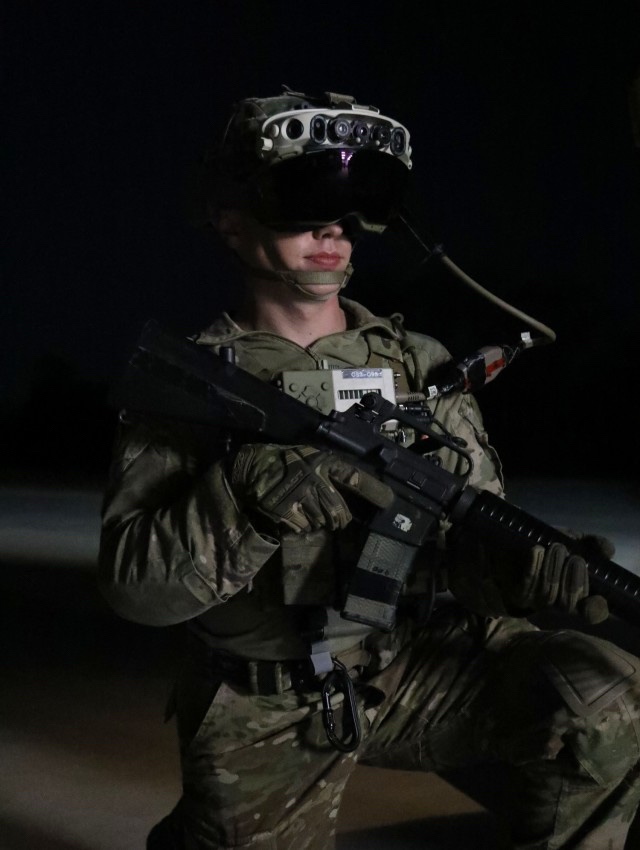
CAMP ROBERTS, Calif. — Mounted armored vehicles such as the Bradley have long been used as heavy weapons platforms with long range sensors to hunt targets and provide armored transportation to dismounted Soldiers. However, once onboard the vehicle, Soldiers lose visibility of what is happening around them, leaving them ill-prepared to anticipate the changing battlespace upon dismount.
In effort to provide situational awareness while Soldiers are in transport, a cross-enterprise Army team is working to incorporate Integrated Visual Augmentation System (IVAS) technology and sensors into vehicle platforms for optimal battlefield visibility at every stage of the mission. The goggle-based IVAS display integrates digital low-light, thermal night vision and high-resolution waveguide technology to create a mixed reality interface for the dismounted Soldier. Therefore, optimizing the system for Soldiers at every stage of a mission — including transport — is critical to ensuring success in future multi-domain operations.
To maximize the integration of IVAS to the Bradley platform specifically, the Army Platform Integration team, comprised of Program Executive Office (PEO) Soldier, PEO Ground Combat Systems and Combat Capabilities Development Command (DEVCOM), executed a third Vehicle Excursion (VE3) test event at Camp Roberts, California in September 2021.
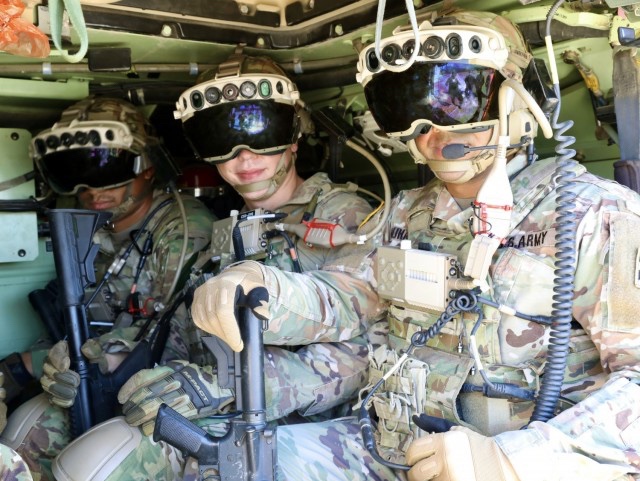
“The goal of platform integration, like the one demonstrated here on the Bradley Infantry Fighting Vehicle, is to not only ensure that Soldiers equipped with IVAS don’t lose their enhanced situational awareness while mounted, but to also take advantage of the on-board platform sensors that enable them to see what the combat vehicle sees,” said Maj. Shawn Jones, Platform Integration lead under PEO Soldier Project Manager IVAS.
Soldiers from 1st Armored Brigade Combat Team, 2-7 Infantry Battalion, 3rd Infantry Division out of Fort Stewart, Georgia, came to test the capability and noticed that feeds from the current sensors were more accessible to each Soldier on the platform as they executed Improvised Explosive Device (IED) searches, reconnaissance and complex attack missions.
“The IVAS augmented reality system integrates communications, thermals and night vision to enhance our situational awareness and lethality from within the Bradley,” Pfc. Benjamin Franke said. “It allows everyone to see what the driver, commander and gunner are seeing outside, which gets more eyes-on and increases situational awareness immediately for when we dismount.”
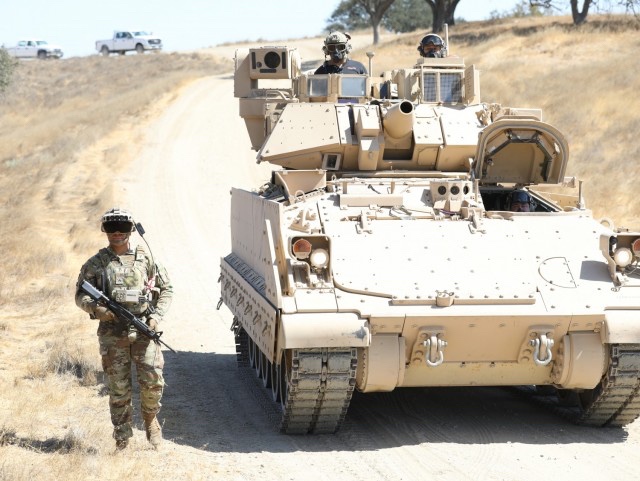
While Soldiers can receive mission updates such as emerging intelligence, terrain and target locations while in transport, they also hope to use the physical advantages of the vehicle platform to maximize their effectiveness upon dismount.
“An individual Solider on ground sometimes has limited visibly of the enemy due to an obstructed line of sight,” said Sgt. 1st Class Darrell Borgic. “But the Bradley is taller and has better optic capability, so dismounts are able to leverage that to see targets while on the ground and make an informed tactical decision.”
“The system lets us get more eyes on our objective so we don’t miss anything, which keeps us all safer,” added Franke. “Some of the exercises required us to scan for IEDs, so having our dismounts onboard also be able to look for those has actually shown to make a difference in our mission success.”
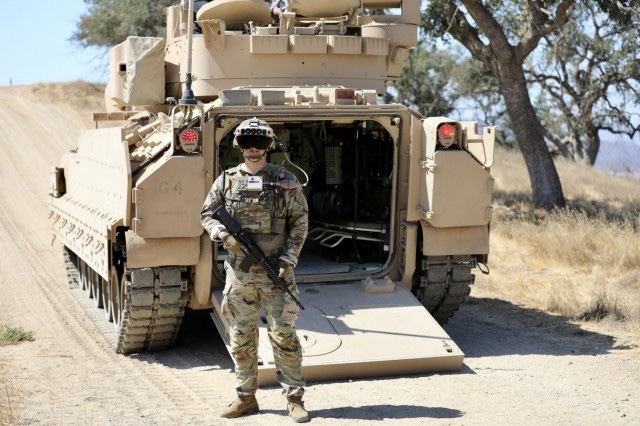
The development of the integrated technology required teammates to reach across lanes of expertise and facilitate the integration of the new modern IVAS with the Bradley. Don Aldea, PM Mounted Armored Vehicles Mechanical and Systems Engineer and Lead Engineer for IVAS Integration, ensured Bradley and IVAS requirements were communicated and developed across the diverse teams.
“It all started when leadership came and asked, ‘When an IVAS-equipped Soldier hops onto a vehicle platform or a Bradley for transport, how do we maintain the connectivity and situational awareness they had on the ground so that combat advantage doesn’t stop just because they are now mounted and moving?’” Aldea said.
It was a complex problem set with requirements and kit that was not easily compatible, he said, but the team’s VE3 user study event was proof of concept that the capability is feasible and operationally delivers increased lethality and survivability. Aldea highlighted some of the main technical features of the system.
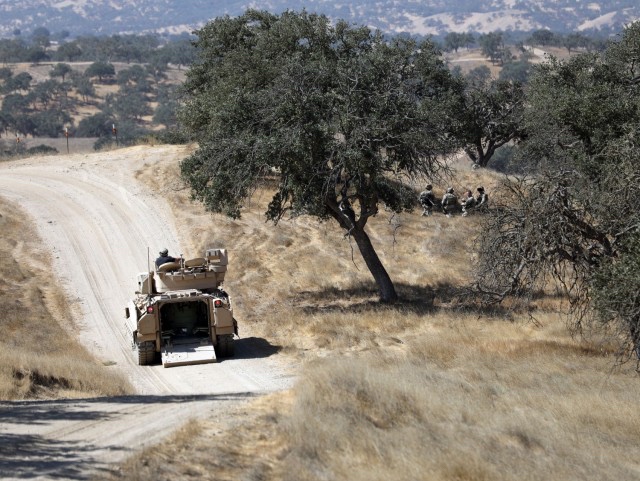
“When a Soldier walks into a Bradley wearing IVAS, they can do three main things: SEE, World View and power up,” he said. “We put in interfaces to power and charge their batteries, for SEE we cloned the feeds from the three existing sensors – front DVE [Drivers Vision Enhancer], driver’s CIV [Commander’s Independent Viewer] and gunner’s IBAS [Improved Bradley Acquisition Subsystem] – so the Soldiers can passively view what the Bradley sees through their IVAS HUD [heads up display]. We also integrated radios so we can use all the features of IVAS for a connected mission execution.”
Though Aldea is a systems engineer, he is passionate about the operational capability gap that IVAS mounted on a Bradley will address.
“When Soldiers come up to a position where they are getting ready to deploy outside of the vehicle — as of today they are going in mostly dark and blind,” Aldea explained. “With this integrated technology, they can get map, mission and intel updates enroute. They can see what is around them to strategically position the Bradley and then drop the ramp where they are not in direct fire and execute immediately.
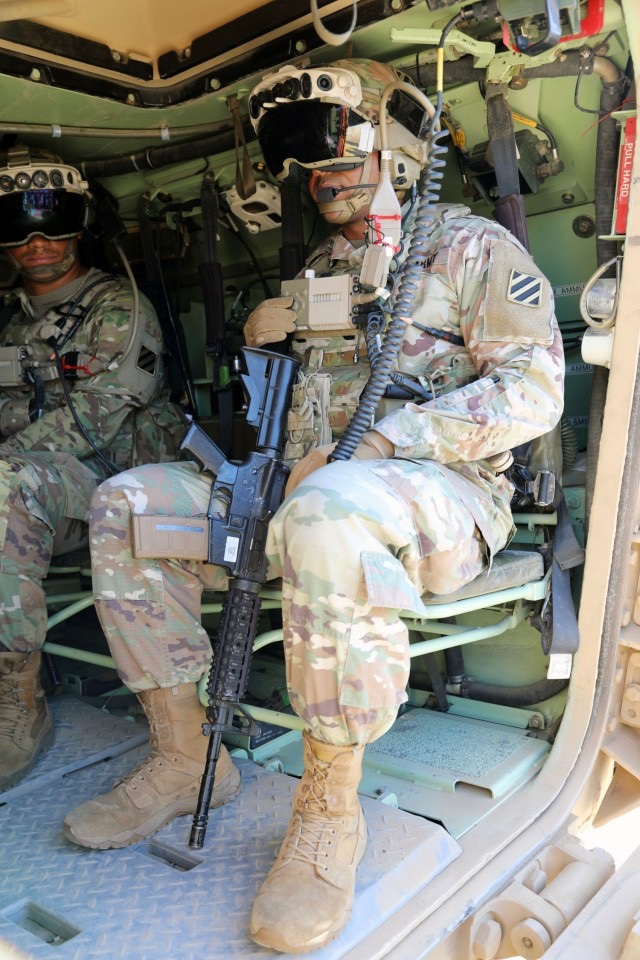
“In World View, they can also know where their brother and sister platforms are, so they can work together, cover more ground and make informed decisions and ad hoc changes on the move all while buttoned up in the Bradley,” Aldea added.
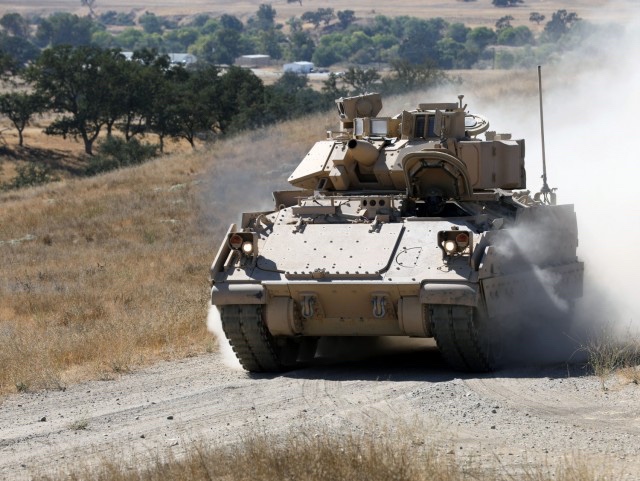
1 / 3
SHOW CAPTION +
3rd Infantry Division Soldiers participate in Bradley Vehicle Excursion 3 test event with the Integrated Visual Augmentation System (IVAS) prototype Capability Set 4 at Camp Roberts, Calif. in September 2021. (Photo Credit: Courtney Bacon)
VIEW ORIGINAL
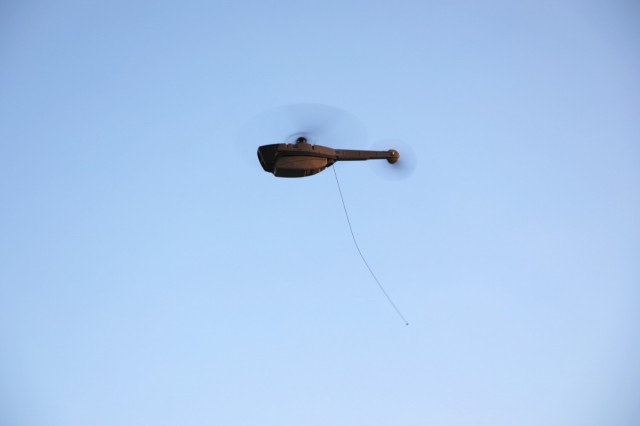
2 / 3
SHOW CAPTION +
3rd Infantry Division Soldiers use the Blackhornet Soldier Borne Sensor (SBS) during the Bradley Vehicle Excursion 3 test event with the Integrated Visual Augmentation System (IVAS) prototype Capability Set 4 at Camp Roberts, Calif. in September 2021. (Photo Credit: Courtney Bacon)
VIEW ORIGINAL
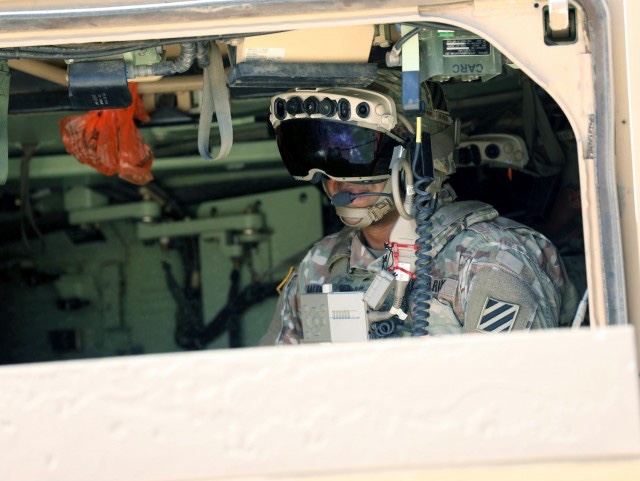
3 / 3
SHOW CAPTION +
3rd Infantry Division Soldiers participate in Bradley Vehicle Excursion 3 test event with the Integrated Visual Augmentation System (IVAS) prototype Capability Set 4 at Camp Roberts, Calif. in September 2021. (Photo Credit: Courtney Bacon)
VIEW ORIGINAL
The DEVCOM night vision lab was also a critical part of the integrated team’s work. Dr. Navin Mathur, IVAS Platform Integration Lead Engineer, explained how the increase in networked and visual accessibility delivers an enhanced solution to the problem set.
“Having a networked End-User Device (EUD), like IVAS on a Soldier in the back of a platform like a Bradley or Stryker becomes invaluable, but it is only part of the solution,” said Mathur. “Not only does the SEE feature allow entire crews to clear a large area within the safety of the vehicle instead of dismounting and being physically exposed, but the physical limitations of the Soldier and platform are significantly minimized through the additional integration of the Army Black Hornet UAS [unmanned aerial system]. The drone feeds into the IVAS HUD which allows visibility on areas that the platform and the dismount can’t physically cover.”
Another notable aspect is the delivery and integration of Soldier power into the vehicle platforms.
“The UBC [universal battery charger] integrated on the platform will reduce the need for Soldiers to carry extra CWBs [conformal wearable batteries] while dismounted on the objective and allow for easy resupply of fresh batteries while mounted,” Mathur said. “Even if the mission is extended, our Soldiers are still powered to execute.”
IVAS is being developed to efficiently deliver relevant mission information and operationally relevant tools to Soldiers at every stage of mission execution. The integration of the technology with platforms and drones extends the combat advantage of a single dismount beyond physical limitations.
“Together it gives the entire force better situational awareness and allows Soldiers to make more informed decisions before dismounting,” said Mathur. “There are no longer gaps in information between mounting, transit and dismounting, which will increase the survivability and lethality for both the platform and the Soldiers.”
The cross-enterprise Platform Integration team plans to conduct a user study with further IVAS integration to Stryker platforms in August 2022.
“This product has the potential to be a force multiplier,” said Franke. “It’ll help bring more vehicles, crews and dismounts home alive and I hope to be able to use it as it continues to develop in the future.”
By Courtney Bacon


In some of these pictures soldiers have this connector that seems to be linking them to the Bradly. It has wires running to the CWB’s on their back and to the Puck, and seems to be some sort of quick-connect system. Does anyone know what it is?
https://files.catbox.moe/sghsev.png
https://files.catbox.moe/1xkx0i.png